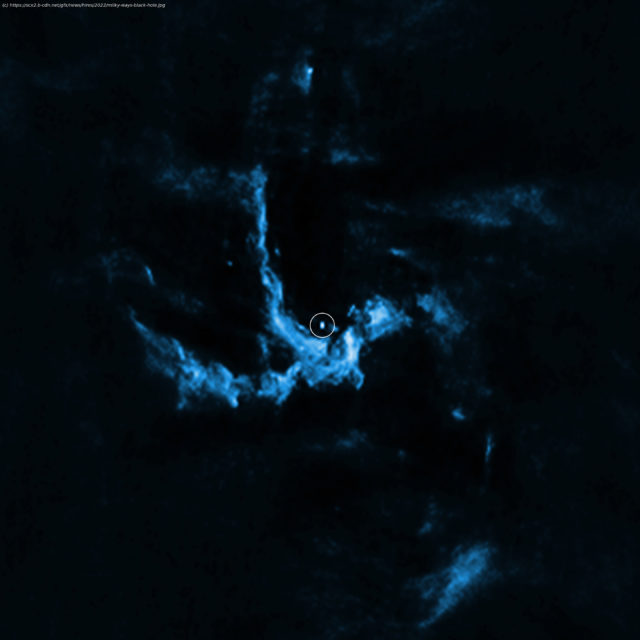The first image of the supermassive black hole at the center of our Milky Way galaxy brings radio astronomy back to its celestial birthplace. The Event Horizon Telescope (EHT), a worldwide collection of millimeter-wave radio telescopes, made the new, landmark image of the same region from which came the first cosmic radio waves ever detected. That detection, by Bell Telephone Laboratories engineer Karl Jansky in 1932, was the beginning of radio astronomy.
May 13, 2022
The first image of the supermassive black hole at the center of our Milky Way galaxy brings radio astronomy back to its celestial birthplace. The Event Horizon Telescope (EHT), a worldwide collection of millimeter-wave radio telescopes, made the new, landmark image of the same region from which came the first cosmic radio waves ever detected. That detection, by Bell Telephone Laboratories engineer Karl Jansky in 1932, was the beginning of radio astronomy. The new EHT image is the culmination of a long history of Milky Way research starting with Galileo Galilei, who used his telescope in 1610 to discover that our galaxy, which appears like clouds to the naked eye, actually is composed of stars. In 1785, British astronomer William Herschel produced a rudimentary map of the Milky Way. In 1918, American astronomer Harlow Shapley located the Milky Way’s center by using the newly discovered distance-measuring tool provided by Cepheid variable stars to determine that a halo of globular star clusters that surrounds the Milky Way is centered on a region in the constellation Sagittarius. That region is obscured from visible-light telescopes by thick clouds of gas and dust.






